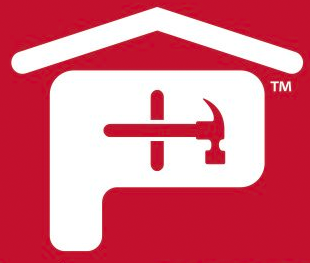One of the questions most often asked by homeowners is: When is the best time to do roof maintenance? The best time is now, especially if you can’t remember exactly when you last had a roof check performed. Even if you had maintenance completed earlier this year, now is better than waiting until late fall or winter.
You can begin the process by visually examining the roof from the ground level. Are there any piles of leaves and twigs on the roof deck? Do the gutters and trim appear straight and unbent? Are there unsightly stains on the shingles?
Do not actually go on the roof to perform a DIY inspection. Only a professional roofing contractor should do this work. A licensed, experienced roofer knows how to safely, and correctly, inspect a roof. He knows about all the components of a roof system and how to accurately gauge their condition. His inspection report will inform you, the homeowner, of any issues that could lead to roof failure.
Ideally the time to do roof work is when temperatures are above freezing, and the intensity and frequency of wind and rain is low. In this condition, a roofing crew would have fewer interruptions and there would be a lower risk of leaking. In several states, roof maintenance can be done at any time of the year. In southern regions of the United States, even during the coldest months of winter, the temperature rarely stays below freezing for any extended length of time.
In late winter and early spring, two to three days of 45 to 50 degree weather with sunny skies would be acceptable for some types of roof maintenance. However, it must be somewhat warmer than that if the maintenance inspection indicates shingles must be replaced. Asphalt shingles won’t seal properly unless warmed to an ambient
temperature near 70 degrees. That doesn’t mean it actually needs to be 70 because solar radiance will adequately heat the shingles even if actual temperatures are in the 50s. However, spring can be a difficult time due to rainfall. If a yard is soggy, it can be difficult for a roofing crew to avoid making ruts in your lawn. Many roofers prefer to drive the crew trucks near the house to collect debris from roof work.
Murphy’s Law may happen and it might be necessary to do maintenance work on a roof in cold weather. Some roofing contractors will try to install a roof when the temperature dips as low as 40 degrees if the sun is going to shine all day. But it’s risky business. Certain roofing materials must have time to “thaw” if they have been stored in freezing temperatures. Manufacturer instructions for cold weather installation must be followed precisely or the result could be costly. For example, cold shingles may crack on the back when nailed to the deck, and that can cause roof failure with leaks. Roof underlayment and shingles should be installed on a warm roof deck so the plywood deck will not quickly expand and contract. That could cause nails to back out and break the seal of the shingles. Many contractors just won’t install in really low temperatures because, with certain brands, each shingle must be hand sealed. Because the chance of failure increases greatly when roof work is installed in below freezing weather, many contractors feel it's better to just not risk it.
In summer months, there will always be a number of extremely hot days. Yet even during the hottest days of summer, roofers can still perform maintenance work on a roof. However, it will be necessary to coordinate your schedule with that of the roofing crew. In the spring and fall, roof work starts around 8:00 a.m. and goes until 5:00 or 6:00 p.m. But during hot summer months, roofers usually start work early in the morning and often end by 2:00 p.m., either because of extreme heat, or the summer storms that frequently brew throughout regions in the country.
Professional, experienced roofing contractors should be knowledgeable in the specific weather conditions of a homeowner’s geographic location. They will be best able to tell you the right time to perform a roof maintenance inspection. Don't wait. Consult them now.



 Gear!
Gear! PRO LOGIN
PRO LOGIN